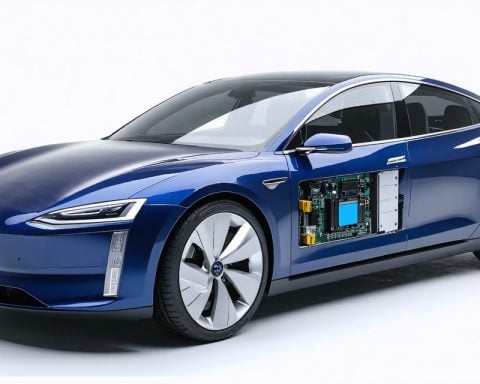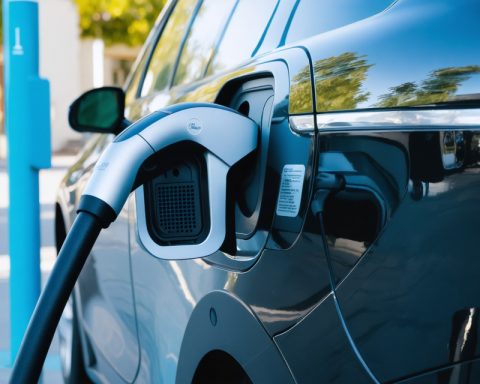- The electric vehicle (EV) revolution is fully realized in 2024, with rapid charging systems making EVs more convenient.
- Charging infrastructure has significantly evolved, ensuring fast and reliable charging during road trips and making universal charge connectors common.
- Adopting an EV entails a mentality shift, akin to charging a smartphone, eliminating the need for gas stations and reducing dependency on gasoline.
- EV ownership introduces routine charging habits, transforming the experience into a natural part of daily life.
- EV charging is intuitive and aligns with the limitless potential of electricity, offering a seamless and inclusive electric experience.
- This era encourages embracing innovation, ready for an electrifying journey where EVs promise convenience and sustainability.
Picture this: highways buzzing with electric vehicles that charge faster than a coffee break, while their drivers sail into a future where filling gas tanks is a long-lost ritual. This isn’t a sci-fi movie—it’s 2024, and the electric revolution has arrived.
Once hesitant about electric vehicles due to charging complications? Fear not. The charging infrastructure has evolved, running alongside the growing numbers of EVs cruising the highways. On road trips, your EV charges quickly and consistently. The options? More reliable than ever. With a universal charge connector in sight, the EV community is truly inclusive now—no one gets left behind.
Adopting an EV lifestyle means a shift in mentality. It’s not about running on empty but plugging in, much like charging your phone overnight. Owning an electric vehicle invites you to embrace new habits, casting aside the frantic search for gas stations. With each daily charge, you’re free from gasoline and its uncertainties.
Imagine the freedom: the gentle glow of your dashboard as your car charges in your driveway, much like your smartphone resting on the nightstand. A tap here, a plug there, and your energy needs are met—the new normal for millions. Where once charging tension loomed, now lies an effortless routine.
While electric batteries are no match for a pen-sized smartphone, mastering EV charging is intuitive. It ultimately reflects personal preference, deeply rooted in understanding how charging mirrors electricity’s endless potential. The takeaway? Welcome to a world where charging is as habitual as unlocking your phone, crafting a seamless electric experience that anyone can embrace.
Are you ready to charge into this electrifying era? Your car awaits, cable in hand, promising a journey powered by innovation.
Your Ultimate Guide to Navigating the Electric Vehicle Charging Landscape in 2024
How-To Steps & Life Hacks for EV Charging
Maximize Efficiency with These Steps:
1. Plan Your Route: Use apps like PlugShare or ChargePoint to locate charging stations along your path. These apps also provide real-time data on charger availability.
2. Utilize Home Charging: Install a Level 2 charger at home to reduce dependency on public infrastructure. Search for local utility incentives as many companies offer rebates for home charger installations.
3. Optimize Charging Times: Charge overnight when electricity rates are typically lower. Check if your utility provider offers time-of-use rates to save on costs.
4. Understand Charging Speeds: Familiarize yourself with the three levels of charging—Level 1 (standard outlet), Level 2 (240-volt outlet or public station), and DC Fast Charging (for quick top-ups on the go).
Real-World Use Cases
Ride-Sharing Services:
– Electric vehicles are increasingly popular for companies like Uber and Lyft, offering drivers lower operational costs and green incentives.
Fleet Management:
– Corporations are integrating EVs into their fleets to meet sustainability goals, benefiting from lower fuel costs and maintenance. Large-scale adoption is seen in delivery and logistics sectors.
Market Forecasts & Industry Trends
According to a report by BloombergNEF, EV sales are expected to reach 31% of all car sales worldwide by 2030, driven by lower battery costs and supportive policies. The charging network is forecasted to expand significantly, focusing on ultra-fast chargers to ease range anxiety.
Reviews & Comparisons
Top EV Models in 2024:
– Tesla Model 3: Known for its range and autopilot features.
– Ford Mustang Mach-E: Offers a blend of performance and comfort.
– Chevrolet Bolt EV: Affordable with a decent range for daily commutes.
Controversies & Limitations
While the environmental benefits of EVs are clear, the production of lithium-ion batteries remains a point of contention due to mining practices and lifecycle emissions. However, innovations in battery recycling and alternative materials are addressing these issues.
Features, Specs & Pricing
Tesla Model 3:
– Range: Approximately 353 miles
– Price: Starts at $39,990
– Features: Autopilot, over-the-air updates, minimalist interior
Security & Sustainability
Cybersecurity:
– As EVs become interconnected, cybersecurity is a growing concern. Manufacturers are investing in robust security frameworks to protect vehicle data and systems from cyber threats.
Sustainability Practices:
– Automakers are increasingly focusing on sustainable materials and processes, aiming for closed-loop systems to lessen environmental impact.
Insights & Predictions
– Battery Technology: Solid-state batteries may revolutionize the industry with higher energy densities and faster charging times.
– Infrastructure Investment: Governments are expected to increase funding for public charging stations, ensuring coverage even in rural areas.
Tutorials & Compatibility
For a comprehensive guide on choosing the right home charger, consider consulting the charging manufacturers’ websites for tutorials and compatibility checks with your specific EV model.
Pros & Cons Overview
Pros:
– Reduced emissions and lower fuel costs
– Incentives and rebates available
– Low maintenance and operational costs
Cons:
– Higher upfront purchase costs
– Charging infrastructure still expanding in rural areas
– Battery lifespan and recycling concerns
Actionable Recommendations
– Join the EV Community: Engage with online forums and local groups to share tips and experiences.
– Monitor Your Energy Usage: Use your vehicle’s app to track charging trends and optimize usage patterns.
– Stay Updated: Regularly check for software updates for your EV to ensure optimal performance and security.
Ready to embrace the electric revolution? Start by evaluating your charging needs and making the necessary upgrades to your home setup for a seamless transition. Your electric journey is just a charge away!
For more on electric vehicles and sustainability, visit Tesla and Ford.













